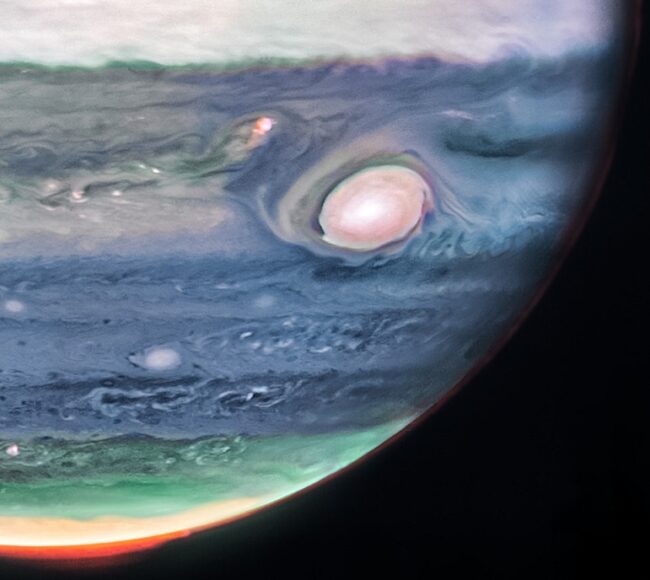Narrow jet stream near equator has winds traveling 320 miles per hour. Jupiter has some of the most conspicuous atmospheric features in our solar
Narrow jet stream near equator has winds traveling 320 miles per hour.
Jupiter has some of the most conspicuous atmospheric features in our solar system. The planet’s Great Red Spot, large enough to envelop Earth, is nearly as well known as some of the various rivers and mountains on the planet we call home.
However, much like Earth, Jupiter is ever-changing, and there’s much about the planet we have yet to learn. NASA’s James Webb Space Telescope is unlocking some of those mysteries, revealing new features of Jupiter we’ve never seen before, including a high-speed jet speeding over the planet’s equator.

While the jet stream is not as visually apparent or stunning as some of Jupiter’s other features, it’s giving researchers incredible insight into how the layers of the planet’s atmosphere interact with each other, and how Webb will aid in these investigations in the future.
NASA’s James Webb Space Telescope discovered a new, never-before-seen feature in Jupiter’s atmosphere. The high-speed jet stream, which spans more than 3,000 miles (4,800 kilometers) wide, sits over Jupiter’s equator above the main cloud decks. The discovery of this jet is giving insights into how the layers of Jupiter’s famously turbulent atmosphere interact with each other, and how Webb is uniquely capable of tracking those features.
“This is something that totally surprised us,” said Ricardo Hueso of the University of the Basque Country in Bilbao, Spain, lead author on the paper describing the findings. “What we have always seen as blurred hazes in Jupiter’s atmosphere now appear as crisp features that we can track along with the planet’s fast rotation.”

The research team analyzed data from Webb’s NIRCam (Near-Infrared Camera) captured in July 2022. The Early Release Science program – jointly led by Imke de Pater from the University of California, Berkeley and Thierry Fouchet from the Observatory of Paris – was designed to take images of Jupiter 10 hours apart, or one Jupiter day, in four different filters, each uniquely able to detect changes in small features at different altitudes of Jupiter’s atmosphere.
“Even though various ground-based telescopes, spacecraft like NASA’s Juno and Cassini, and NASA’s Hubble Space Telescope have observed the Jovian system’s changing weather patterns, Webb has already provided new findings on Jupiter’s rings, satellites, and its atmosphere,” de Pater noted.

While Jupiter is different from Earth in many ways –Jupiter is a gas giant, Earth is a rocky, temperate world– both planets have layered atmospheres. Infrared, visible, radio, and ultraviolet-light wavelengths observed by these other missions detect the lower, deeper layers of the planet’s atmosphere where gigantic storms and ammonia ice clouds reside.
By comparing the winds observed by Webb at high altitudes, to the winds observed at deeper layers from Hubble, the team could measure how fast the winds change with altitude and generate wind shears.
“We knew the different wavelengths of Webb and Hubble would reveal the three-dimensional structure of storm clouds, but we were also able to use the timing of the data to see how rapidly storms develop”, added team member Michael Wong of the University of California, Berkeley, who led the associated Hubble observations.

The researchers are looking forward to additional observations of Jupiter with Webb to determine if the jet’s speed and altitude change over time.
“Jupiter has a complicated but repeatable pattern of winds and temperatures in its equatorial stratosphere, high above the winds in the clouds and hazes measured at these wavelengths,” explained team member Leigh Fletcher of the University of Leicester in the United Kingdom.
“It’s amazing to me that, after years of tracking Jupiter’s clouds and winds from numerous observatories, we still have more to learn about Jupiter, and features like this jet can remain hidden from view until these new NIRCam images were taken in 2022”, said Fletcher.


COMMENTS